Police are often first responders to mental health crises, but tragedies are prompting change
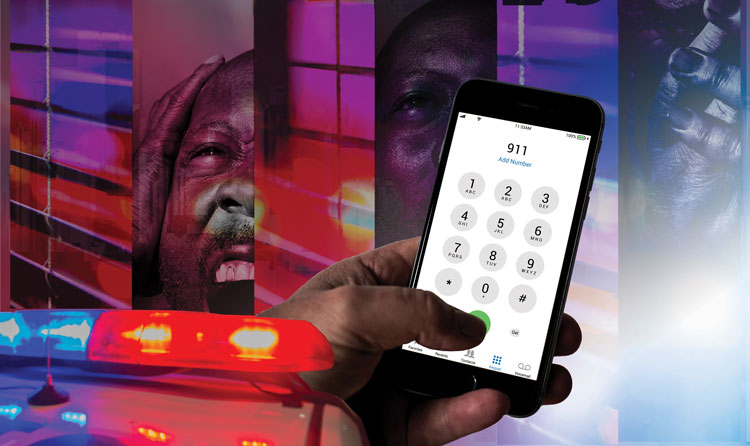
Photo Illustration by Sara Wadford/ABA Journal
Before he came home on holiday break in late 2015, Quintonio LeGrier, an engineering student at Northern Illinois University, had been acting erratically. There were a series of incidents on campus. He got into a dorm fight and had been charged with a misdemeanor in March. Two months later, he shouted profanities in the dorm cafeteria and struck an employee when she asked for his ID. And in September, after LeGrier frightened and chased a woman, university police worked with medics to admit him involuntarily to a nearby DeKalb, Illinois, hospital for a psychiatric evaluation.
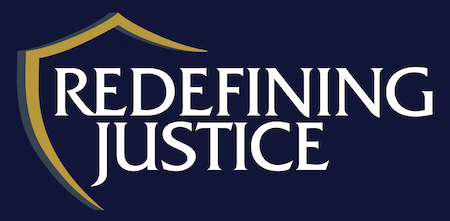
Back home in Chicago visiting his father early on the morning after Christmas, the 19-year-old Black sophomore called 911 three times in mental distress. He requested police assistance, claiming there was someone in his home threatening his life. The dispatchers did not inquire about the state of his mental health. One hung up.
Shortly afterward, LeGrier tried to break down his father’s barricaded bedroom door with a baseball bat. His dad called 911, telling the dispatcher, “My son has freaked out. I need an officer.”
When police arrived at the two-flat on West Erie Street and rang the doorbell, neighbor Bettie Jones responded, opening the door and stepping outside. LeGrier charged down the stairs toward them on the front stoop, swinging the aluminum bat toward Chicago Police Department officer Robert Rialmo. The officer moved back, then pulled his service weapon and fired multiple shots. Six hit LeGrier, killing the distressed college student outside Jones’ front door. Jones took a bullet in the chest as she stood near the entrance to her apartment and also was killed.
Cases such as Quintonio LeGrier’s have prompted demands around the country to reform how police respond to people in mental health crises, a movement that advocates believe can help avert such deadly confrontations.
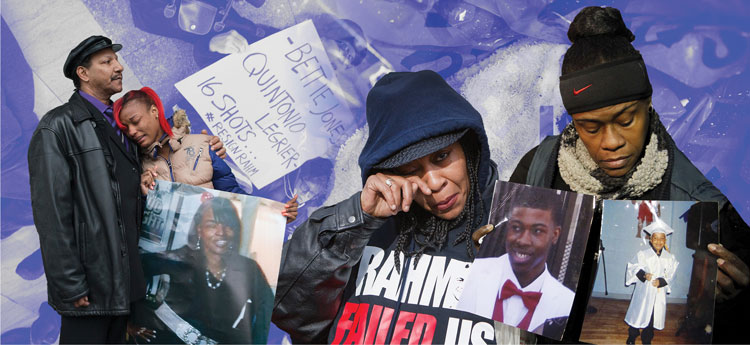
Grieving family of Quintonio LeGrier, killed by police, have filed wrongful death lawsuits on behalf of their loved ones who had mental health problems. Photos by Reuters/Frank Polich; Scott Olson/Getty Images.
“We’ve trained people that calling the police is the way to get help, but chances are things won’t go well,” says Amy Watson, a professor at the Helen Bader School of Social Welfare at the University of Wisconsin-Milwaukee.
“Let’s be clear about how poorly this situation works,” says Alex Vitale, a professor of sociology at Brooklyn College and author of the 2017 book The End of Policing. “At least 25% of people who are shot and killed by police officers suffer from acute mental illness at the time of their death.”
These incidents also have sparked protracted legal actions against municipalities and police departments from families who believe their loved ones were killed unnecessarily.
The LeGrier case instigated a spate of lawsuits, including a wrongful death case from the family for $25 million and separate civil action filed by Bettie Jones’ family. However, in an unusual move, Rialmo countersued, blaming LeGrier for causing the officer to shoot and kill the student and the innocent neighbor. He asked for $10 million from LeGrier’s estate for emotional damage. Photos by Reuters/Frank Polich; Scott Olson/Getty Images.
A growing national crisis
For the past year in Chicago, the issue of how to improve response to mental health calls has been the focus of negotiations between Mayor Lori Lightfoot’s administration and the city council.
“There is a growing recognition around the country that mental health crisis calls are fundamentally health care calls,” says Matt Richards, the deputy commissioner of behavioral health at the Chicago Department of Public Health. “Mental health professionals need to be part of the team.”
With many community mental health clinics now shuttered, the spotlight on racial justice intensifying and chronic stressors surrounding the COVID-19 pandemic growing, there is a gnawing sense of urgency nationwide in both small towns and large urban areas to change how behavioral health issues are handled.
Around the nation, pressures for change grew after the high-profile case in Rochester, New York, of Daniel Prude, who experienced a behavioral health crisis after taking phencyclidine, or PCP, on March 23, 2020. Prude left his brother’s home wearing long johns and a tank top—but no coat or shoes when the temperature was below freezing—then stripped off those items outside, standing naked. Police arrived and handcuffed the 41-year-old Black man, but once restrained, Prude’s delusions intensified. Police then placed a mesh hood over his head. No social workers or medical personnel were contacted. The police video shows little was done to soothe Prude.
In fact, as Prude shouted, “Gimme that gun, I mean it” and appeared to be attempting to stand up, police pushed him down. One officer used his full body weight and both hands to press the side of Prude’s head to the cold pavement while another knelt on his back for more than 2 minutes. He died seven days later.
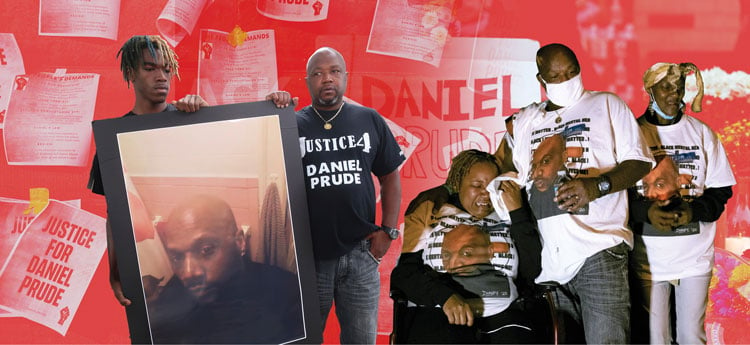
Grieving family of Daniel Prude killed by police, have filed wrongful death lawsuits on behalf of their loved ones who had mental health problems. Photos by Joshua Rashaad McFadden/Getty Images; AP Photo/Ted Shaffre, file; Michael M. Santiago/Getty Images.
An autopsy ruled Prude’s death a homicide by “complications of asphyxia in the setting of physical restraint,” but a Rochester Police Department investigation found no wrongdoing by officers. Additionally, in February, a grand jury convened by New York Attorney General Letitia James declined to charge any of the officers connected with Prude’s death. Prude’s family filed a federal lawsuit for damages against the city of Rochester and the officers involved in September.
“Every place is struggling,” the University of Wisconsin-Milwaukee’s Watson says. “We’ve been so willing to rely on police that there hasn’t been much development for other ideas. But now we are at the point where we have to do something.”
With an estimated 240 million 911 calls made each year, police serve as the de facto first responders for behavioral health issues including mental health crises, substance abuse and homelessness. A 2019 report from the Treatment Advocacy Center, or TAC, a nonprofit in Arlington, Virginia, in partnership with the National Sheriffs’ Association and the New York State Association of Chiefs of Police, found that 21% of law enforcement’s time was spent responding to and transporting people with mental illness.
Court decisions and related settlements can take time. The city of Chicago approved a $16 million settlement for the family of Bettie Jones, the neighbor killed in the LeGrier case, nearly three years after she was killed.
Waiting until matters escalate
After widespread media coverage of cases such as LeGrier’s and Prude’s, fearful families may hesitate to call 911 when their loved ones are in distress.
“They say, ‘I don’t want to call police because they might kill my family member,’” Watson says. “So they wait. They call only when things have escalated and they can’t wait any longer. And at that point, it’s the hardest time for police to become involved.”
Often, those calls do not go well. People with untreated mental illnesses are 16 times more likely to be killed during a police encounter, according to TAC.
“No one is any better off because the police got there,” says John Snook, TAC’s former executive director, now the director of government relations and strategic initiatives at the National Association for Behavioral Healthcare. “Many in law enforcement didn’t get into the job to become a psychiatrist.”
A nationwide survey of 2,406 senior law enforcement officials, Management of the Severely Mentally Ill and Its Effects on Homeland Security, found that police and sheriffs are overwhelmed by “dealing with the unintended consequences of a policy change that in effect removed the daily care of our nation’s severely mentally ill population from the medical community and placed it with the criminal justice system.”
Often, a family has to wait for their loved one to deteriorate to become an imminent danger, which amounts to waiting for the loved one to violate the law before requesting an emergency inpatient civil commitment.
In Black and brown communities, this creates additional stress because officers too often don’t see a sick human being but a criminal, which increases the probability that deadly force will be used, says Sabah Muhammad, a legislative and policy counsel at TAC whose brother lives with paranoid schizophrenia.
“If a Black man with severe mental illness must present an imminent danger in order to involve the police, what happens when police, who are subject to implicit bias or outright racism, arrive?” wrote Muhammad, a former public defender, in an op-ed in the Washington Post.
Her family in Georgia has been forced to make that call. “You don’t want to. You hesitate,” she said in an interview. “No one should be put in that situation.”
Along with police, dispatchers must overcome their own biases. “Without special training for dispatchers, there could always be police sent to Black and brown communities,” Watson says.
Beyond police training
In Chicago, where half of the city’s publicly funded community mental health centers were closed in 2012, the Lightfoot administration and the city council developed separate plans to incorporate mental health professionals in response to 911 calls. The mayor’s office focused on developing a three-person unit that includes a police officer, while the plan by the progressive members of the council installs a two-person mobile unit that does not include law enforcement. The 2021 budget includes language for both.
“What both plans are trying to get at is that officers alone don’t have the tools to resolve a mental health call. What’s important is the ability to link people to mental health services,” says Watson, who studied Chicago’s system for two decades.
About one-quarter of Chicago’s officers, or about 3,100 police, have received 40 hours of training with the National Alliance on Mental Illness, or NAMI. Called the Crisis Intervention Team, or CIT, it teaches officers to respond thoughtfully and effectively to those experiencing mental health issues and redirect the person in distress to social services, says the Chicago Police Department’s Antoinette Ursitti, commander of the department’s Crisis Intervention Unit and coordinator of its CIT program.
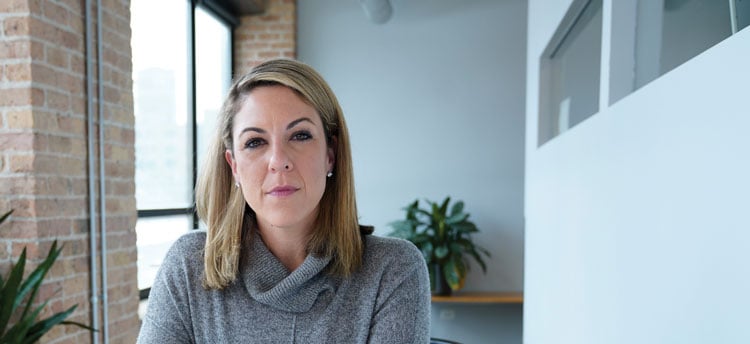
Photo of Alexa James by Wayne Slezak/ABA Journal
The city beefed up this program in 2017. Additionally, all 911 call takers now receive mandatory training to recognize mental health crises, says Alexa James, the CEO of NAMI Chicago, a nonprofit dedicated to supporting those with mental health conditions. She also has served on the city’s Police Accountability Task Force.
Still, even when trained police offers and medics arrive at an emergency call, a person in a mental health crisis might feel terrified at the sight of a police cruiser with its lights on and uniformed officers.
“That uniform matters,” Muhammad says. “If you’re calm in the middle of your crisis, the police will still handcuff you to take you to the car. Those handcuffs, they do something. If you’re in the middle of psychosis, you need a medical response to happen instead of criminal response.”
Prevent and preempt
Under Chicago’s current system, when a resident calls 911 with a mental health situation, a Chicago Police Department unit with a CIT officer will be dispatched. An emergency medical technician along with a medical transport could respond as well.
However, a new system starting as soon as this summer will include call center support, co-responder teams, and diversion and deflection. It’s broadly based on similar programs in other places across the country and will launch in two of Chicago’s 22 police districts.
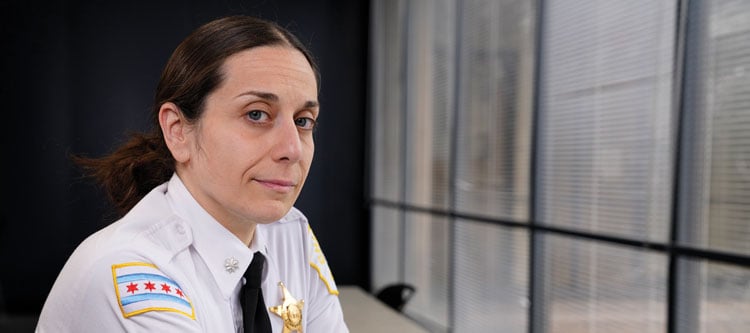
Commander Antoinette Ursitti: “Sometimes the presence of a uniformed officer might be confusing, implying that something criminal has been done.” Photo by Wayne Slezak/ABA Journal
“These pilots are a natural extension of the robust crisis system the city has been developing,” the CPD’s Ursitti says.
First, Chicago will add three mental health professionals—each working a 40-hour shift—to 911 call centers in the pilot districts. “It makes sense to have mental health professionals in the call center,” the Department of Health’s Richards says. “These professionals can provide support to callers, consult the call taker, support dispatch teams.
“The goal is to prevent and preempt cyclical calls,” he says. “By attending to underlying needs, everyone is better off.”
Second, the portion of the plan developed by the Department of Health creates two new units that include a community paramedic, a mental health professional and a CIT officer wearing a special uniform to co-respond to behavioral crises based on various models nationwide. They’ll arrive together in a sprinter van.
“Sometimes the presence of a uniformed officer might be confusing, implying that something criminal has been done,” Ursitti says. “We want to be crystal clear and want to make sure there is no confusion.”
Often, police do not know they are responding to a mental health crisis when arriving at an emergency call. This co-responder model has the capability to handle any call that has a mental health component—and all types and risk levels, Richards says. Support works both ways. The co-responders could back up police who find themselves in a mental health situation, and the co-responders could request police assistance if the situation warrants it as well.
Third, a process of diversion and redirection will connect people who have had repeated contact with the system—emergency room trips, complex mental health needs, substance abuse issues—directly to support services.
Treatment, not trauma
However, members of Chicago City Council’s progressive caucus pushed back against the administration’s plan, saying it did not go far enough and police should be removed entirely from mental health calls that are not life-threatening.
As a result, two additional response units will be added, staffed by health care professionals without an accompanying CIT officer.
“It’s been time to do this for a while. We’ve looked at safety from the point of view of punishment exclusively,” says Rossana Rodriguez-Sanchez, alderman for Chicago’s 33rd Ward. “It’s time for treatment, not trauma.”
A 2019 publication by CIT International, a partnership aiming to facilitate understanding, development and implementation of CIT training in communities, states that police should not be the first responders in behavioral health situations.
“Unfortunately, it’s simply impossible for law enforcement to create a safe and humane crisis response system on their own or to take on permanent responsibility for managing every crisis call for service,” according to the publication Crisis Intervention Team (CIT) Programs: A Best Practice Guide for Transforming Community Mental Health Crises. “Instead, law enforcement must work with their partners, look for strengths in the community, and support mental health system partners in shouldering primary responsibility of crisis response services.”
Under the council’s plan, residents’ calls would be rerouted to an emergency line through which a paramedic and a clinician would be dispatched without a law enforcement officer. “Crisis response work has to do with notions of safety and creating a system of safety nets that are supportive of people in need—and less about punishment,” says Rodriguez-Sanchez, who is currently pursuing a master’s degree in social work.
The Chicago City Council plan is based on the 32-year-old Crisis Assistance Helping Out on the Streets, or CAHOOTS, program in Eugene, Oregon. There, two-person teams consisting of a mental health caseworker and a medic respond to 911 and nonemergency calls involving a behavioral crisis when safety is not an issue. That means calls concerning conflict resolution, suicide threats and welfare checks are deflected to these units.
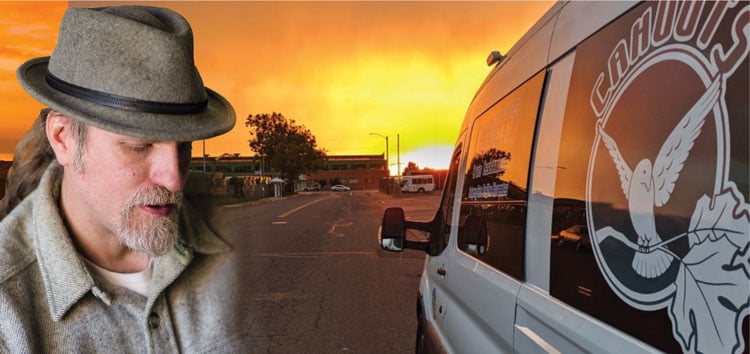
Benjamin Brubaker: “Having the right response in the first place can reduce the legal action.” Photos by Bill Holderfield; courtesy of White Bird Clinic.
“There are no lights or sirens. There’s no uniform beyond a jacket or a hoodie, and everyone is unarmed,” says Benjamin Brubaker, clinical co-coordinator of the White Bird Clinic, home base for the CAHOOTS program. “We talk with them and get them the support they need—and not by sending them to jail or the hospital.”
Ideally, qualified responders have lived experience with mental health issues, showing empathy with the person in crisis. “Having the right person respond makes all the difference,” he adds.
The teams offer information and referrals, transportation to social services, first aid and basic-level medical help. However, if the CAHOOTS team finds a crime in progress, violence or life-threatening emergencies, police are called in as primary or co-responders. “That is a very small percentage of the time,” Brubaker says.
Through CAHOOTS, Eugene has diverted 20% of all 911 calls from police, Brooklyn College’s Vitale says. “That’s a huge volume—and they saved $8.5 million just from that,” he says.
Since last summer, more than 400 municipalities have contacted CAHOOTS organizers asking for advice on how to set up a similar program, Brubaker says, including representatives from Chicago.
Holistic approach
Although CAHOOTS works well for Eugene, a city of 176,000 residents, a bigger city like Chicago, home to 2.7 million people, has different needs and resources. CAHOOTS is replicable, Brubaker says, but it must involve input down to the neighborhood level. “Ideally, the response will be amended to that specific community,” he says.
However, Snook warns that employing the CAHOOTS model is not a magic bullet. “Those programs are helpful, but they not going to help if an entire ecosystem of support is not there,” he says.
To address a spectrum of needs, Los Angeles County, home to 10 million people, has proposed a holistic approach to overhaul its crisis response system over the next four years. The plan creates someone to talk to, someone to respond and somewhere to go for people in crisis.
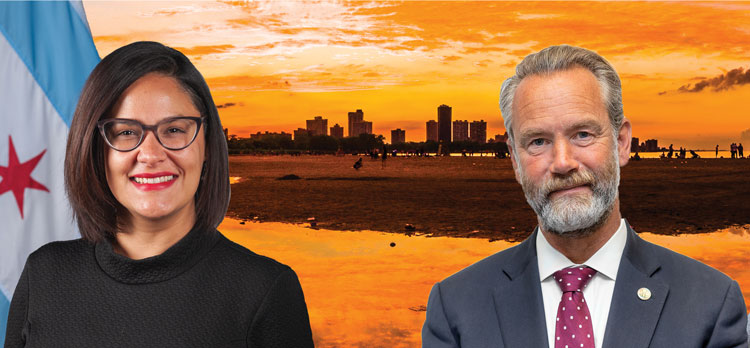
Rossana Rodriguez-Sanchez and Dr. Jonathan Sherin. Photos courtesy of Rossana Rodriguez-Sanchez; LA County Department of Mental Health; Shutterstock.
The “Care First, Jails Last” efforts focus on preventing high-stakes crises that can lead to horrendous outcomes, says Dr. Jonathan E. Sherin, director of the county’s Department of Mental Health. Instead, the new system allows for calls for support to come early on, when family members first notice signs that their loved one is deteriorating.
“We’re looking to solve the question of ‘What do you do between when someone is slipping and you’ve got to call the cops?’” he says.
All emergency calls would be funneled through a regional call center network. A small team of health and law enforcement experts determine if the appropriate dispatch is law enforcement, social workers or peers. “And if instead of a cop a peer is there, someone with street credibility, the response will change,” he says. “We can slow down, wait. ‘Do you want a cigarette?’”
To staff those responses, the financial commitment required will be “massive,” Sherin says, with a $400 million one-time investment anticipated for infrastructure.
And each year, the county will need as much as $300 million to keep it going. “We’ve got to put our money where our mouth is,” he says. “This is how you end suffering.”
Lingering lawsuits
In Chicago, meanwhile, the 2021 budget includes $65 million in affordable housing and homeless prevention, $36 million toward community-based violence prevention and $20 million for mental health, including $1.3 million to launch the crisis response initiatives.
“I can’t help but laugh; $1 million is not enough for paper and ink,” Alderman Rodriguez-Sanchez says. “It’s not enough to accomplish anything meaningful. It’s disingenuous to say we’re going to take these steps but not give it any money.”
The pilot efforts do not have enough money, NAMI’s James says. “I’m supportive of this next step, but it is not the end all, be all. There’s more to do.”
“Having the right response in the first place can reduce the legal action,” CAHOOTS’ Brubaker adds. “Costs for additional support can be offset by fewer lawsuits that tie up the court for years.”
Legal consequences surrounding the Quintonio LeGrier incident dragged on.
Despite his mental health issues, the family’s case centered on Rialmo’s response during the call. “Simply, this case was about a police officer who shot and killed two people unjustifiably,” says attorney Basileios J. Foutris of Foutris Law in Chicago.
The eight-day trial ended dramatically in June 2018, with the jury finding that Rialmo unjustifiably killed LeGrier and awarding the family $1 million. Then moments later, the judge learned the jury signed a special interrogatory finding that Rialmo fired in the reasonable belief that LeGrier posed the danger of death or great bodily harm and quickly overturned the decision.
A jury also found in Rialmo’s favor in his lawsuit filed against the LeGrier estate for infliction of emotional distress, though no damages were awarded. Additionally, the state’s attorney found insufficient evidence to file criminal charges against the officer. Illinois law considers a baseball bat a deadly weapon, and Rialmo was seen as defending himself. Ultimately, in October 2019, the Chicago Police Board voted unanimously to fire Rialmo.
LeGrier’s mother could not be reached by the ABA Journal for comment. His father declined to discuss the case.
“If Quintonio called today, things would be different,” James says. “Dispatchers would know how to identify someone who is out of touch with reality and link them to care. They would have asked different questions, they would have coded for the dispatch of a CIT-trained officer. There would be a different outcome.”
This story was originally published in the April/May 2021 issue of the ABA Journal under the headline: “Calls for Help: Police are often first responders to mental health crises, but tragedies are prompting change.”
Julianne Hill is an award-winning Chicago-based writer, reporter and producer who specializes in covering mental health and brain diseases. She is a former recipient of a Rosalynn Carter Fellowship for Mental Health Journalism.
Write a letter to the editor, share a story tip or update, or report an error.


